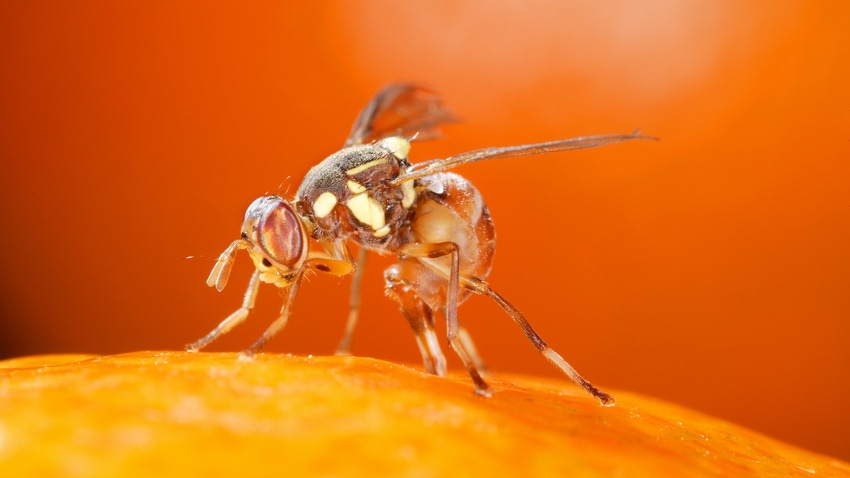October 10, 2023

Quarantines have been established in the regions around Rancho Cordova, Calif., and Redlands, Calif., after multiple detections of Bactrocera dorsalis, a key agricultural pest.
Known as the oriental fruit fly, the insect is known to attack more than 400 fruits and vegetables, including apricots, cherries, citrus, figs, peaches, pears, plums and tomatoes, according to the USDA’s Animal and Plant Health Inspection Service.
New quarantine areas set up by the California Department of Food and Agriculture cover a combined 218 miles. A link to both quarantine maps can be found here.
The new zones come after CDFA imposed a 112-square-mile quarantine in Santa Clara County in August, temporarily prohibiting any shipment of fruits and vegetables out of these areas. Similar restrictions were imposed in Southern California last summer.
Santa Clara County agricultural commissioner Joseph Deviney has noted that infestations of the fruit fly have doubled statewide in recent years.
Damage occurs when the female fruit fly lays her eggs inside the fruit. The eggs hatch into maggots, which tunnel through the flesh of the fruit, making it unfit for consumption.
“It’s a serious threat,” Deviney told KGO-TV in San Francisco, noting that the female typically deposits 10 to 100 eggs per piece of fruit. “So when you go to pick your fruit off your tree, you open it up, it’ll have 10 to 100 maggots. A single female fly can lay 1,500 eggs easy.”
IPM principles
Following the principles of Integrated Pest Management (IPM), agricultural officials use the “male attractant” technique as the mainstay of the eradication effort for this invasive species. This approach has successfully eliminated dozens of fruit fly infestations in California.
Trained workers squirt a small patch of fruit fly attractant mixed with a very small dose of an organic pesticide, Spinosad, approximately 8-10 feet off the ground on street trees and similar surfaces; male fruit flies are attracted to the mixture and perish after consuming it. The male attractant treatment program is being carried out over an area that extends 1.5 miles from each site where the oriental fruit flies were trapped.
While fruit flies and other invasive species that threaten California’s crops and natural environment are sometimes detected in agricultural areas, the vast majority are found in urban and suburban communities.
The most common pathway for these pests to enter the state is by “hitchhiking” on fruits and vegetables brought back illegally by travelers as they return from infested regions of the world, or in produce from other countries sent to California.
Bactrocera dorsalis is widespread throughout much of the mainland of southern Asia and neighboring islands, including Sri Lanka and Taiwan, and it has invaded other areas, most notably Africa and Hawaii.
Residents with questions about the project may call CDFA’s Pest Hotline at 1-800-491-1899. Additional information may be found here: www.cdfa.ca.gov/plant/off.
Source: California Department of Food and Agriculture
About the Author(s)
You May Also Like






